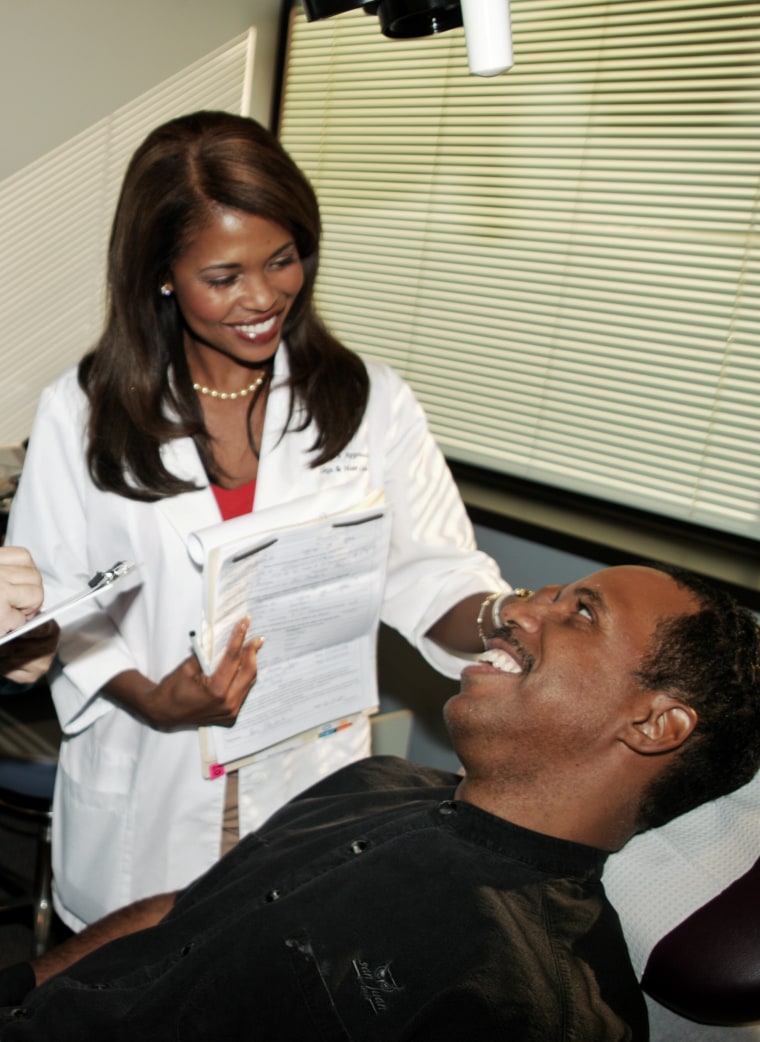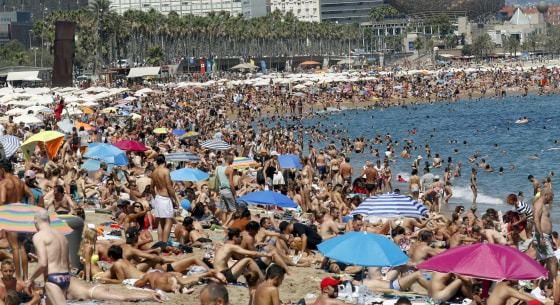
There’s nothing like enjoying the great outdoors in the summertime. but having black or brown skin is not a superhero cape that protects you from the sun.
Marcy Street, MD, board certified dermatologist at Doctor's Approach in Okemos, Michigan, says it is just as important for African Americans to be vigilant about their summer skin care as their white counterparts.
Dr. Street says that just one thing to do to protect your skin from harmful UV rays and reduce your risk for skin cancer, it is to “be committed to applying and reapplying a sun blocking product with an SPF of 30 or more on your face and body, not just in the summer, but year round.”
"Certain skin cancers can be more deadly in blacks because we tend to get a later diagnosis, unfortunately, when it is more difficult to treat.“
She says these precautions are important for all members of the family, including your kids. “If you are on the beach, or by the pool, reapply the product every 30 minutes for consistent protection,” she adds.
According to the American Cancer Society, the incidence of skin cancer is on the rise overall. While it is true that melanin, the color pigment in the skin does protect black skin to a certain extent, it is important to make sunblock and sunscreen a part of your regular skin routine. It could be a matter of life and death.
Dr. Street, who is a certified in Mohs micrographic skin cancer surgeon, says “blacks can and do get skin cancer.“
According to Dr. Street, “It is true that skin cancers are more likely to occur in whites and in lighter skinned individuals, but, certain skin cancers can be more deadly in blacks because we tend to get a later diagnosis, unfortunately, when it is more difficult to treat.“

Squamous cell carcinomas are the most common skin cancers in blacks. Melanomas are the second leading skin cancer among blacks. Basal cell carcinoma is more common in Hispanic and Asian individuals.
“Make an appointment once a year with your dermatologist to have a clinical skin examination,” Dr. Street advised. She also recommends performing an examination of your own skin, at home once a month: “Look for suspicious moles and lesions that don’t heal, change shape and have uneven margins.” This includes looking between fingers and toes, the palms of the hands, as well as on the bottoms of the feet and the legs.

Easier than ever
Many moisturizers, body lotions and makeup products now include sunscreen. “It is important to think about applying the product to the nose and even using a lip moisturizer that has sunscreen,” Dr. Street says.
She adds that if bald men are going out in the sun, they should absolutely be wearing a sunblocking product on their heads. Keep a travel size in your purse, beach bag or golf bag.
“Unprotected direct exposure to the sun can also cause other damage to the skin, such as age spots, wrinkles and crows feet,” Dr. Street says. Using a moisturizer or lotion with sun protection packs a one-two punch, because it will help also you prevent premature aging and dry skin.
And if you are a sun worshipper, you may want to take extra precautions to limit your exposure to the sun. Wear a wide brimmed hat, and sunglasses that filter out UV rays. Also try to stay out of the sun between 10 am and 4 pm, when the direct exposure is at its highest.

Pay attention to your skin year roundRegularly examining your skin can save your life. The first signs of skin cancer can start as small changes in the skin. Skin cancers, if detected and treated in the early stages are curable. The American Cancer Society suggests using the ABCDE rule when conducting your self-exam for suspicious scars, moles and lesions.A is for Asymmetry: One half of a mole or birthmark does not match the other.B is for Border: The edges are irregular, ragged, notched, or blurred.C is for Color: The color is not the same all over and may include shades of brown or black, or sometimes with patches of pink, red, white, or blue.D is for Diameter: The spot is larger than 6 millimeters across (about ¼ inch – the size of a pencil eraser), although melanomas can sometimes be smaller than this.E is for Evolving: The mole is changing in size, shape, or color.In addition look out for the following signs:A cut or wound bleeds, oozes, or crusts, doesn't heal, or lasts longer than a month.Brown spots on your hands, soles, or under your nails.A growth, or sore near scarred or inflamed skin on your legs. They may look like keloids, which are harmless. But the could be a cancerous tumor.For more information on skin cancer and what to look for go to the American Cancer Society.
